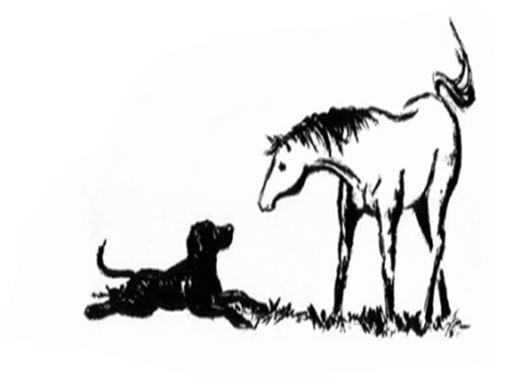Animal Chiropractic is a form of healthcare that focuses on the diagnosis, treatment, and prevention of musculoskeletal conditions in animals.
PLEASE NOTE: In the state of Vermont, you will need a veterinarian’s referral for Animal Chiropractic.

Our four legged friends have spines just like we do; slightly different configurations but surprisingly much the same, and their spines (also hips, elbows, hocks, etc.) can get misaligned just like ours. Chiropractic adjustments are an extremely effective treatment for their musculoskeletal problems. The goal of chiropractic adjustments is to realign the joints and to restore normal joint motion mechanics to aberrant areas. This in return gives the animal relief from pain and allows normal functioning to be restored.
What is a subluxation or joint restriction?
A subluxation is a condition of the spinal column (or extremity joint) in which one or more joints are not aligned correctly and hence, not moving properly. This intersegmental joint dysfunction can lead to global range of motion, muscle coordination, and flexibility problems.
How are subluxations treated in animals?
Correct detection by a trained animal chiropractor is the first step to correction. Subluxations in the animal’s spine are then corrected by a controlled adjustment – which is a low force, high-speed thrust in a specific direction to restore the movement of a restricted joint. Large dogs and horses will frequently be adjusted manually, but small dogs and cats may be adjusted using an adjusting instrument. With a more chronic condition, the animal may also have significant muscular involvement and may require soft tissue work (specific muscular massage) to allow the adjustment to hold. I often perform soft tissue work as part of my treatment before the adjustment on both dogs and horses.
How many adjustments are needed to correct subluxations?
Just as with humans, long-standing chronic conditions usually take more time to resolve with chiropractic treatment. Newer minor injuries usually respond rapidly to treatment, and require fewer visits.
Most animals will receive significant improvement in 1-6 treatments over the course of 2-6 weeks. Age, conditioning, general health, and intervening factors determine the ability for full recovery.
Disorders Treated with Chiropractic:
Dogs:
- Dog flinches along neck/spine when petted or groomed
- Difficulty going up and down stairs, climbing into car, up on couch or onto bed
- Pain or crying out with getting up from lying or with trying to lie down
- Difficulty running, runs lopsided or off center
- Bowel and bladder dysfunction
- Early stages of hip dysplasia
- Spinal arthritis and early stages of spinal stenosis
- Digestive problems